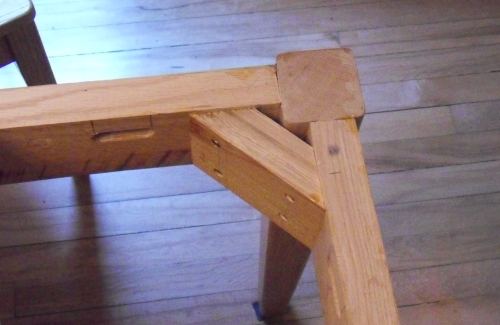I've drawn up a table within Sketchup that I'd like to try my hand at building. For the most part it should be pretty straight forward but there are 2 things that I'd like to hear some opinions on.



[This message has been edited by txag2008 (edited 2/21/2013 2:07p).]
- First, what would be the easiest way to secure the mitered 4x4s at each corner of the table? (I don't have a biscuit joiner)
- What would be the best way to cut the through mortises for the 4x4s for the bottom supports on each end of the table?



[This message has been edited by txag2008 (edited 2/21/2013 2:07p).]






